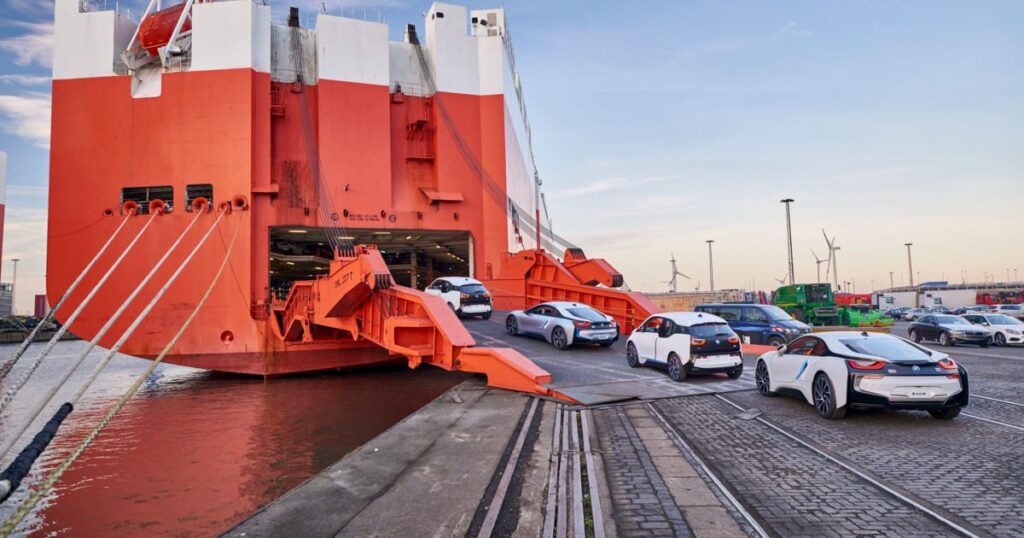
When it comes to car shipping, one of the most reliable and cost-effective methods is RoRo shipping. Short for “Roll-on/Roll-off,” this shipping method is widely used for transporting vehicles across seas and oceans. Whether you’re relocating, purchasing a vehicle from overseas, or shipping a car to a different country, RoRo shipping offers a simple yet highly efficient solution. In this article, we’ll explore what RoRo shipping is, how it works, its benefits, and why it’s the go-to choice for many car owners and businesses worldwide.
1. What is RoRo Shipping?
RoRo shipping is a method of transporting vehicles where they are driven onto a specialized vessel, securely parked, and then driven off upon reaching the destination port. Unlike container shipping, where vehicles are placed inside a container for transit, RoRo shipping involves vehicles being driven directly onto and off of the ship. This makes it an ideal solution for shipping cars, trucks, SUVs, and other motor vehicles across long distances with minimal handling.
The ships used for RoRo shipping are designed with large ramps and spacious decks that can accommodate many vehicles, making them perfect for mass transportation. These ships are commonly referred to as “car carriers,” and they can carry hundreds or even thousands of vehicles in a single voyage.
2. How Does RoRo Shipping Work?
RoRo shipping is relatively simple, making it a convenient choice for vehicle transport. Here’s an overview of how the process works:
Step 1: Preparation and Booking
Once you decide to ship your vehicle using RoRo shipping, the first step is to book your shipment. This involves providing details about your vehicle, including its make, model, and dimensions, as well as the pick-up and delivery locations. It’s essential to ensure that your car is in good condition before shipping, and any personal items should be removed from the vehicle.
Step 2: Vehicle Drop-off
After booking your shipment, you’ll drop off your vehicle at the designated port or a location arranged by the shipping service. At the port, your car will be driven onto the RoRo vessel and parked securely in a specific parking area on the ship.
Step 3: Loading the Vehicle onto the Ship
RoRo ships are designed with large ramps and decks that allow vehicles to be driven directly onto the ship. The vehicle is then securely parked and fastened to prevent any movement during transit. Vehicles are usually parked in multiple rows, stacked vertically, ensuring efficient use of space and providing a safe, stable journey.
Step 4: The Journey
Once all the vehicles are loaded, the RoRo vessel sets sail toward its destination. The ship moves across seas or oceans, depending on the length of the journey. RoRo shipping is generally faster than container shipping since vehicles do not require the additional step of being loaded into containers.
Step 5: Unloading at the Destination
Upon arrival at the destination port, the vehicles are driven off the ship using the same ramp system. Once off the vessel, the car is ready for delivery to the designated pick-up location or directly to the owner. The process is quick and efficient, with minimal handling required.
4. Types of Vehicles Best Suited for RoRo Shipping
RoRo shipping is most commonly used for transporting various types of vehicles, including:
Cars: Whether you’re relocating, purchasing a car from abroad, or shipping a fleet of vehicles, RoRo shipping is an excellent solution for shipping personal cars.
Trucks and SUVs: Larger vehicles like trucks and SUVs can easily be accommodated on RoRo vessels.
Motorcycles: Motorcycles are often shipped via RoRo as they can be driven directly onto the ship, similar to cars.
Commercial Vehicles and Equipment: Heavy-duty vehicles like buses, trucks, and construction equipment can be shipped using RoRo, provided they meet size and weight requirements.
However, there are some vehicles that may not be suitable for RoRo shipping. For example, vehicles that are non-operational or have damaged wheels may not be eligible for RoRo transport since they need to be driven onto the ship.
5. Safety and Security During RoRo Shipping
While RoRo shipping is a safe and efficient method of transportation, there are still safety measures in place to ensure the security of your vehicle during transit:
- Secure Parking and Fastening: Once on the ship, vehicles are securely parked and fastened using wheel chocks and straps to ensure that they do not move during the journey.
- Insurance Coverage: Most car shipping services that offer RoRo shipping include insurance coverage as part of the process, ensuring that your vehicle is protected against potential damage during transit.
- Surveillance and Monitoring: RoRo ships are equipped with surveillance systems, and there are strict protocols to ensure the safety of the vehicles on board.
Conclusion:
Shipping Cars offers a cost-effective, fast, and efficient way to ship your car across the world. Its simplicity, low risk of damage, and ability to handle a wide variety of vehicles make it an attractive option for car owners looking to transport their vehicles safely and quickly. Whether you’re shipping a personal car, a fleet of vehicles, or even heavy equipment, RoRo shipping provides an ideal solution that meets your needs. With its straightforward process and the added benefit of minimal handling, RoRo shipping ensures that your vehicle arrives at its destination securely and on time.

